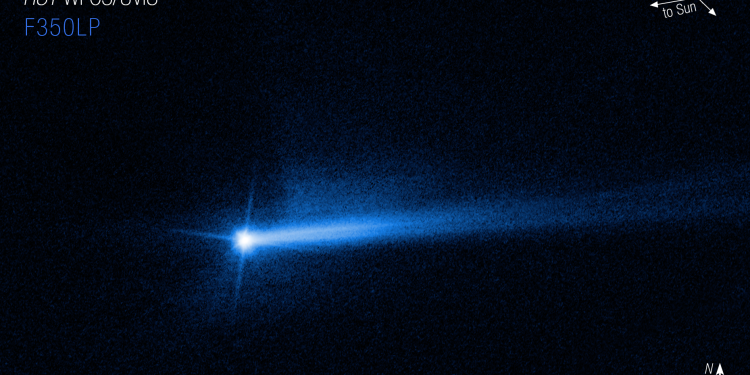In a mission that seems straight out of science fiction, the European Space Agency (ESA) is launching (October 7th, 2024) the Hera spacecraft to investigate the aftermath of NASA’s groundbreaking planetary defense test. The Hera probe will study the damage caused when NASA’s Double Asteroid Redirection Test (DART) intentionally collided with the asteroid Dimorphos in 2022. This mission, which tested Earth’s ability to defend itself against potentially dangerous asteroids, will now receive its follow-up investigation.
DART: Humanity’s First Successful Strike on an Asteroid
In 2022, NASA’s DART mission sent a refrigerator-sized spacecraft crashing into Dimorphos, a small moonlet orbiting the larger asteroid Didymos. This collision, occurring 11 million kilometers from Earth, aimed to demonstrate whether an asteroid’s trajectory could be altered by a direct impact. The mission succeeded, with DART shortening Dimorphos’ orbit around Didymos by 33 minutes, proving that redirecting asteroids is possible.
Hera’s Mission: Investigating the Results
Despite DART’s success, many questions remain unanswered. What was Dimorphos like before the impact, and how much damage was inflicted? ESA’s Hera probe will act as a “crime scene investigator,” closely examining the aftermath of DART’s impact to better understand how asteroid deflection works in practice. The findings will be critical for refining strategies to protect Earth from similar threats in the future.
Hera is scheduled to launch aboard a SpaceX Falcon 9 rocket from Cape Canaveral, Florida, although an “anomaly” detected during a recent Crew-9 mission might cause delays. ESA project manager Ian Carnelli stated that the team is awaiting approval from the US Federal Aviation Administration, NASA, and SpaceX, with a launch window open until October 27.
What to Expect from Hera’s Journey
Once launched, Hera will pass by Mars in 2025 before reaching Dimorphos in December 2026. Upon arrival, the spacecraft will spend six months closely examining the asteroid and gathering detailed data on how the impact affected it. These insights will enhance our knowledge of planetary defense methods, ensuring we are better prepared to deal with potential threats from space.
Asteroids have long been a subject of both fascination and concern. While large asteroids capable of causing global devastation strike Earth roughly every 500,000 years, smaller asteroids like Dimorphos, which could still cause widespread destruction, are more frequent. Though nearly all of the largest asteroids have been mapped, only about 40% of mid-sized asteroids have been identified, leaving gaps in our knowledge.
The Unusual Nature of Dimorphos
The DART mission revealed that Dimorphos wasn’t a solid rock as initially expected. Instead, it was likely a loose collection of rubble, loosely held together by gravity. This structure means that instead of creating a crater, DART may have reshaped the asteroid entirely. These findings are puzzling, making Hera’s upcoming investigation even more important in understanding the behavior of such celestial objects.
Hera’s Scientific Arsenal
Hera will carry 12 scientific instruments, along with two nanosatellites, to analyze Dimorphos. The Juventas nanosatellite will attempt a landing on the asteroid, a first for a body of its size. Using radar, it will probe Dimorphos’ internal structure, while the Milani nanosatellite will study the asteroid’s composition and assess the overall impact of DART from a distance. Once Hera completes its investigation, it may attempt to land on Dimorphos or Didymos, where it will remain, providing ongoing data about the asteroid system.











